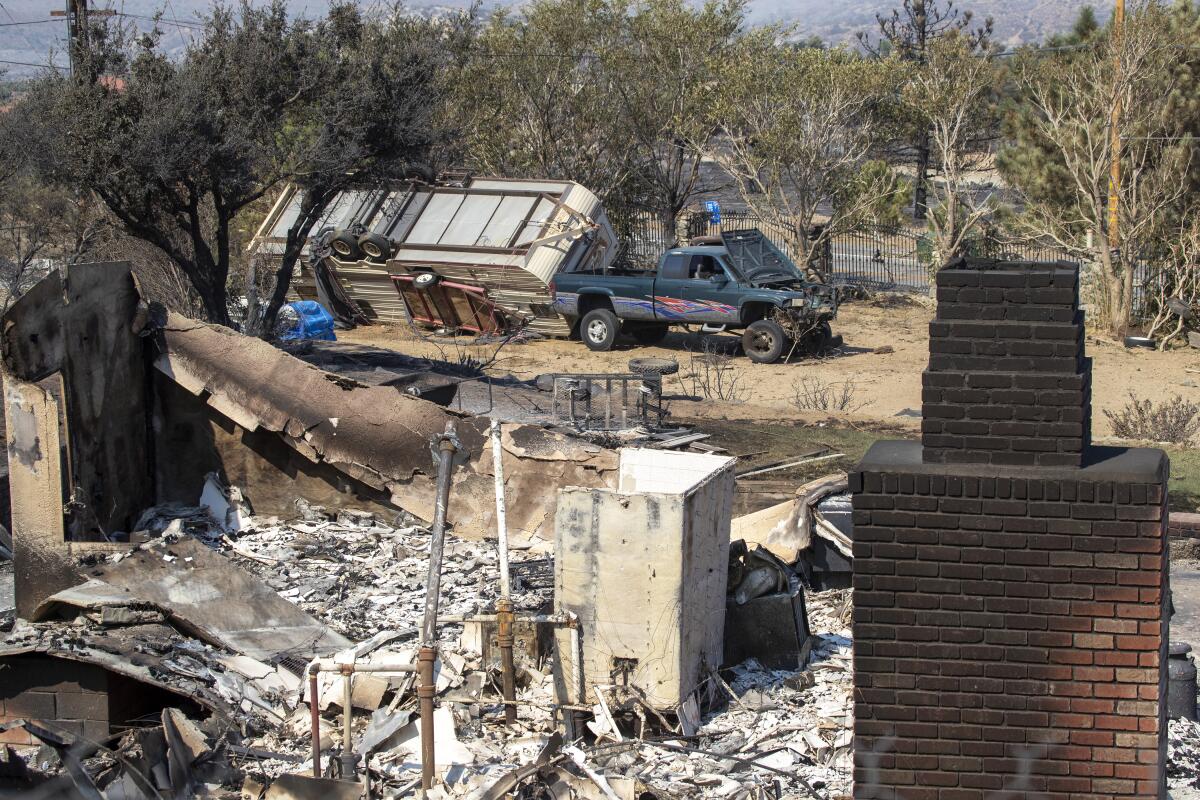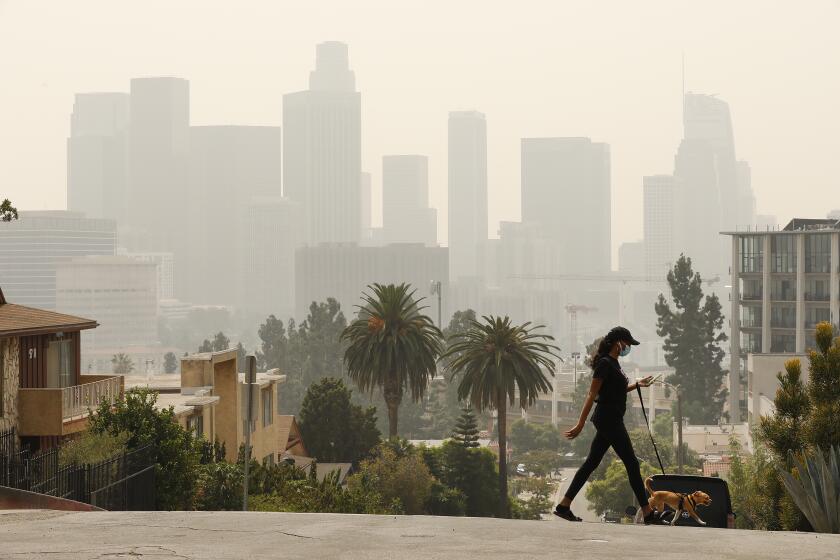Think this fire season is bad? ‘This isn’t the worst of it,’ retired U.S. Forest Service chief says

- Share via
Bad news, Californians, but 2020’s fire season may not be an aberration.
In fact, we’re probably facing years of increasing fire, smoke, death and destruction both in rural towns and suburban foothills unless we and the rest of the country get on the same page on how to deal with this threat.
At least that’s how Tom Harbour, retired fire chief of the U.S. Forest Service, sees it.
In an interview with the Los Angeles Times, Harbour, who led the agency’s fire response for 11 years and spent 46 years in firefighting, gave his thoughts on how California and the West have arrived on this fire-filled path and the difficult choices that would have to be made to leave it.
“The broad confluence of factors that you got there in California — the Meditteranean climate, the [dead trees] in the Sierra and then over 2 million properties at risk — shouldn’t be a surprise,” Harbour said. “It’s trite to say ... this isn’t the worst of it.”
For weeks, millions of Californians were smothered by smoke from wildfires. Many worry about long-term health impacts.
As Gov. Gavin Newsom said recently, and experts have been warning for years, California’s annual cycle of natural disasters is a harbinger of life in the United States, with increasingly frequent extreme weather events, Harbour said.
“It’s a terrible situation, and I hope this allows us people to really step back and start thinking about solutions,” Harbour said. “We need to carefully consider individually, county by county, as a state, as a society, whether or not this kind of situation ... which seems to be happening with increased frequency, is acceptable. I don’t believe it is.”
For starters, the government can manage its forests better through more prescribed fires and commercial timber harvesting, Harbour said. When we don’t pay the costs to manage wild land up front, residents, businesses and governments end up paying billions on the back end through lost income, insurance claims and recovery funds when monster fires pass through.
“What kind of fire do you want?” Harbour asked rhetorically. “Because you can’t exclude fire in these ecosytems, and you can’t ‘one more firefighter’ your way out of these.”
The last few years of extreme fire underscore the need for a new approach, Harbour said. About 19 million of California’s 33 million acres of forest, or 57%, is federal. Less than 1 million acres, or 3%, is owned by the state. The rest is a mix of private and local government land owners.
“We’ve worked ourselves into a place now ... where you got to remove some of the fuel, but as soon as you start talking about removing fuel, there’s a lot of distrust about how you do that,” Harbour said. “But if you think that stasis is an option, Mother Nature is smiling right now. Stasis is not an option. She’s not going to allow it. And so here we are.”
Record heat. Record acres burned. Sky-high air pollution. The extremes California has experienced in recent weeks all have one thing in common: They were made worse by climate change.
We have to consider not only how to manage forests, Harbour said, but also how to set up rural mountain and suburban foothill towns and how to design homes that can survive there. In the last three years, residents and visitors in the those areas have had to find safety with firefighters and sheriff’s deputies in parking lots and at the edge of reservoirs after evacuation routes were cut off by flames and their homes burned down in a shower of embers.
“In many places in the West, we got one way in and one way out, and when you get a fire blocking that cherry stem, it’s bad,” Harbour said. “They must pay attention because when they do not, they put themselves in even more peril and they put first-responders in horrible situations.”
What would undergird all of this, Harbour says, is an essential level of sturdiness and self-reliance among individuals and community-banding when a wildfire looms, similar to the dramatic firefight that took place in the Santa Cruz mountains in August.
“It’s going to be both horizontal in the community among homeowners and private landowners, and it’s got to be vertical, from private landowner, the local community, the county, to the state and the feds,” Harbour said.
Harbour said he hopes it won’t require another paradigm-shifting disaster, like the 1871 Peshtigo fire that killed at least 1,200 people, or the 1910 “Big Burn” that scorched 3 million acres, to spark the necessary culture shift.
“But it looms large in the minds of those that work in the wild land fire field, and it is not the kind of motivator that we want to solve this problem,” Harbour said. “Because it’s going to take years to stabilize the problem. It’s not going to take only a behavior change ... it’s going to take changes in policy.”
More to Read
Sign up for Essential California
The most important California stories and recommendations in your inbox every morning.
You may occasionally receive promotional content from the Los Angeles Times.













